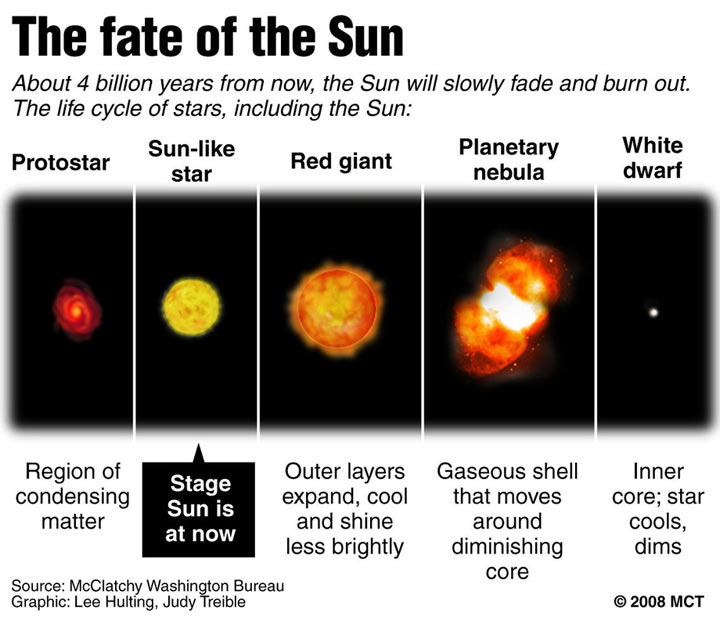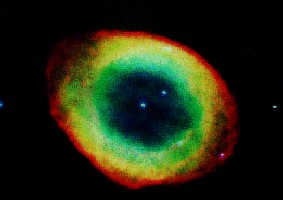
Poets of many times and places have written in awe of the "eternal stars." But astronomers know that stars are not eternal. A star is an ongoing thermonuclear reaction. As such, it burns fuel. When the fuel runs out, the star dies.
Our sun is a fairly ordinary star an will undergo a fairly ordinary death. Roughly 5 billion years old, it is now entering middle age. But eventually it will achieve the stellar equivalent of codgerhood. And that will be, to put it mildly, very bad news for any living thing still occupying the planet Earth, including any of our descendants.
As the aging sun consumes its hydrogen fuel and loses mass, it will paradoxically become larger and more luminous, swelling into a fiery ball known as a "red giant." It will grow two thousand times more luminous and a hundred times larger than today's familiar yellow globe.

At some point its outer edges will enclose the earth. The entire planet will be, in effect, cremated. Of course, life here will have ended long before this, as the oceans boil away and the land becomes barren, red hot rock.
 The good news is that this scenario gives us quite a bit of time to escape - or at least to put our affairs in order. Most astronomers estimate that the red giant stage will not arrive for another 4 to 7 billion years. The bad news is that the procrastinators should not take too much comfort in this time table.
The good news is that this scenario gives us quite a bit of time to escape - or at least to put our affairs in order. Most astronomers estimate that the red giant stage will not arrive for another 4 to 7 billion years. The bad news is that the procrastinators should not take too much comfort in this time table.
The sun is even now growing steadily brighter. Those who study such things suggest that in e mere billion years (some say as little as half a billion), it will be 11 percent brighter than today, heating our planet to a level inhospitable to life. And 3.5 billion years from now, it will be 40 percent brighter, probably broiling everything on the earth's surface.
